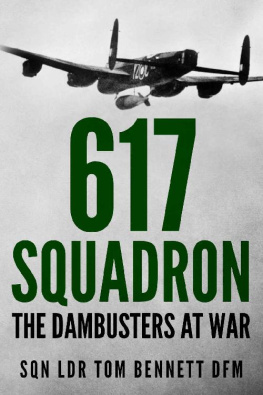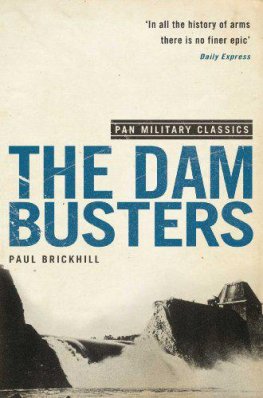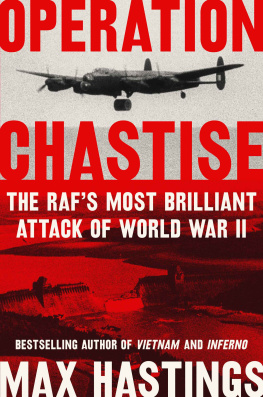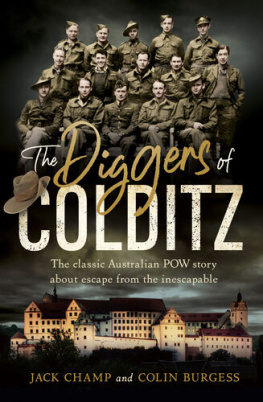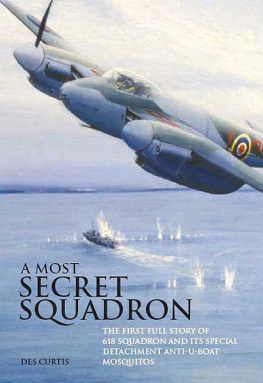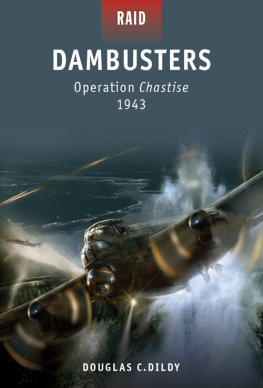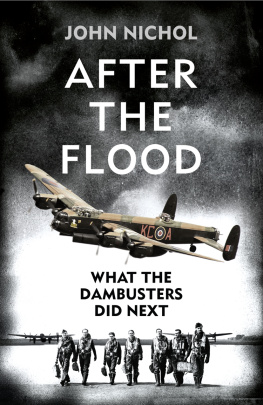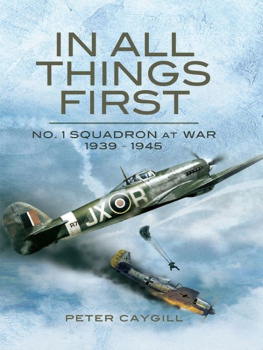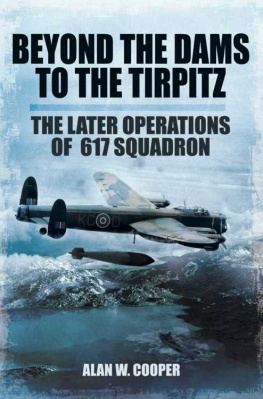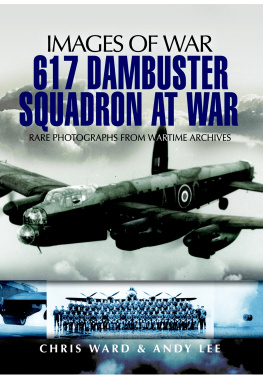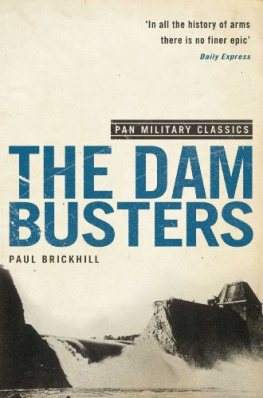Table of Contents
Introduction: And it came to pass
My introduction to 617 Squadron was somewhat involuntary and backdoor. I finished my first tour of operational duty in February 1943 having flown with No 49 Squadron in No 5 Group since August 1942. I was posted for duties in the operations room at 5 Group headquarters at St Vincents Grantham, where I stayed for six very informative months. At my own request, I was posted for instructional duties at No 1654 Heavy Conversion Unit at RAF Wigsley and performed the duties of a radar navigation instructor. In April 1944 I was posted to RAF Wyton, near Huntingdon, for a second tour of operations with Pathfinder Force (PFF), No 8 Group, Bomber Command.
I arrived at the Officers Mess, Wyton, at about 16.30 hours on the Easter Monday, having been granted a 48-hour pass to spend the Easter holiday with my family in Ilford, Essex. Tea was being served in the ante room, so I left all my luggage in the foyer and went in. I knew that many of my former aircrew friends were already serving at Wyton and so I was not really surprised to hear a yell of welcome as I collected my tea. I turned to see Squadron Leader Tommy Blair bearing down on me, a broad smile across his round moustachioed face. Tommy had been the bombing leader during my tour with 49 Squadron and, strangely enough, had been the very first officer to greet me when I entered the Officers Mess at RAF Scampton for the first time as a newly-commissioned Pilot Officer, after having served five months on the squadron as an NCO Bloody glad to see you, Ben he boomed, putting my cup of tea in jeopardy as he pumped my hand, Its about time 5 Group started to send us some real navigators! I settled down with him, avidly talking about the old days on 49 Squadron, under Wing Commander Leonard Slee.
Suddenly our lively conversation was rudely interrupted by the Mess tannoy: Would Flying Officer Bennett please come to the phone! I ignored the call, since I felt that doubtless there were other doubles about the place, and who would know that I had reported in but a short time previously? However, when the message was repeated plaintively for a third time, and Tommy had moved off to speak to another officer, I went out to the telephone, merely to reassure myself that it was someone else that was being paged. Hello, Ben came a voice that I recognized immediately as that of Gerry Fawke, the pilot with whom I had been crewed-up at No 19 OTU, RAF Kinloss, in February 1942 and with whom I had shared my first tour. I listened uncomprehendingly as he continued, Im sending a gharri over to Wyton for you, Ben to bring you across to Warboys with all your gear. Its on its way and has been told to pick you up from the Officers Mess, so dont leave there. We are converting to Mossies at Warboys and then joining 617 Squadron for target-marking duties. Ill give you all the griff when you arrive over here, mate and with that he rang off.
Sure enough, a van turned up and collected me from the Mess. In the interim, I had been unable to find Tommy Blair to explain to him that I had probably spent the shortest tour at Wyton of any aircrew and if he reads these words today, it will solve a mystery that has been puzzling him for the last forty years! Incidentally, I was to learn many years later that a very similar thing had happened to Dave Shannon. He had arrived as a volunteer for PFF duties at Wyton in late February 1943 only to receive a telephoned invitation from Wing Commander Gibson to return to 5 Group to join a new squadron that he was forming in the Group. Dave returned to Lincolnshire with all haste. I guess it was incidents like this that caused Air-Vice-Marshal D. C. T. Bennett, the AOC No 8 Group, to have rather a querulous attitude towards the upstart 617 Squadron in the later stages of the war.
Gerry told me that he had heard of my PFF posting whilst he had been a staff instructor at the Lancaster Finishing School at RAF Syerston, Lincoln. At the same time, the bush telegraph had passed the message that Leonard Cheshire was seeking aircrew to man Mosquito aircraft for low-level target marking and there werent many takers. Gerry had leapt into a Lancaster and headed swiftly for RAF Woodhall Spa. He managed to get an interview with the 617 Squadron commander, who was impressed by Gerrys record and accepted him for the role. Gerry blurted out the story of my posting to PFF and that he was certain that I would only be too pleased to join forces with him again. I will get the necessary posting amendments put in hand immediately said Chesh, and Flying Officer Bennett can join you at Warboys for the conversion course and return to Woodhall with the other lads.
Well, thats how it all came about. I knew very little about 617, save what was general knowledge around 5 Group and Bomber Command. The very real feeling of thankfulness that I had in knowing that I was going back to war in 5 Group and with Gerry Fawke did much to dampen down any secret qualms I may have had about the posting and, anyway, I could always console myself with the thought that at least I had maintained the old Service tradition of not volunteering for anything!
617 Squadron was officially formed at RAF Scampton on 1 April 1943, April Fools Day and the 25th anniversary of the formation of the Royal Air Force. The Dams raid, which was carried out so magnificently on the night of 16/17 May 1943, remains the most outstanding individual bomber squadron feat of the whole war. Quite properly, it stands as a lasting memorial to the courage and devotion of all bomber aircrew throughout the conflict. Besides lifting the civilian morale, it boosted the spirits and efforts of the thousands of aircrew with other Bomber Command squadrons then engaged in the bitter bomber battles against the German enemy. It has rightly secured an imperishable niche in British history.
Wing Commander Gibson relinquished command of the Squadron after the Dams raid and was succeeded by Squadron Leader George Holden DSO, DFC, who had previously served in No 4 Group in Yorkshire. On 6 July 1943, he led six aircraft against electric power installations at Aquata Scrivia (near Genoa), whilst another six aircraft attacked the transformer station at San Polo DEnza. All twelve aircraft flew on to North Africa after the bombing and landed at RAF Blida without loss. They left Blida on 25 July and bombed the harbour and shipping at Leghorn en route for Scampton. On 29 July the Squadron carried out leaflet raids on the large towns of Northern Italy. Again they landed at Blida and returned later to the United Kingdom, this time without attacking any enemy target on the way back.
The Squadron transferred en bloc from RAF Scampton to RAF Coningsby on 30 August 1943. For two successive nights, 14/15 and 15/16 September, the Squadrons target, at low level, was the Dortmund-Ems Canal at Ladbergen in Germany. In that short period, six of the nine crews detailed were lost without the canal being breached, the cause being the fog that enveloped the target area. Among the casualties was George Holden and, with him, practically the remainder of the crew that had flown with Guy Gibson on the Dams raid. Some thirty minutes after landing after the second of these attacks, Flight Lieutenant Mick Martin DSO, DFC, captain of one of the three surviving crews, was discussing the reasons for the outcome of the operation with Air-Vice-Marshal Sir Ralph Cochrane, AOC No 5 Group, who had hastened to Coningsby and was obviously shocked by the losses sustained. Mick told of the poor visibility en route, the dense fog at the immediate target area, the presence of unexpected light-flak defences and the long search for the target. Suddenly Sir Ralph said, You are a Squadron Leader as from now and acting commander of 617!

